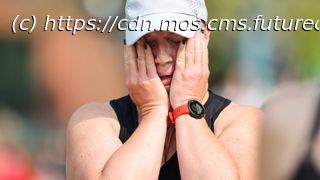Experts tell Live Science what it means to „hit the wall“ while exercising and how to avoid it.
You’ve reached mile 20 (kilometer 32) of your marathon and suddenly a wave of exhaustion crashes over you, making you feel dizzy and causing your legs to feel like lead. One more step seems impossible.
You’ve likely „hit the wall“ — but what does this mean?
Hitting the wall occurs when the body becomes abruptly and debilitatingly tired during exercise, causing people to slow down or stop working out completely.
The condition usually occurs in people who are competing in long-distance, endurance sports, such as cycling, swimming and running. This is because it is caused by a depletion in the body’s store of glycogen — a type of glucose that is stored in liver and muscle tissue.
During high-intensity exercise, our muscles use glycogen as a primary energy source by breaking it down into glucose, which powers movement. However, our muscles can only store a certain amount of glycogen. This means that toward the end of a long race, if someone has not replaced that glycogen with food or drink, the body starts running on empty.
For instance, a marathon is 26.2 miles (42.2 km) long. The average person stores around 1,800 calories worth of glycogen in their muscles and will generally burn around 100 calories per mile (1.6 km) that they run. Therefore, one would typically hit the wall around the 18- to 20-mile (29 to 30 km) mark.






